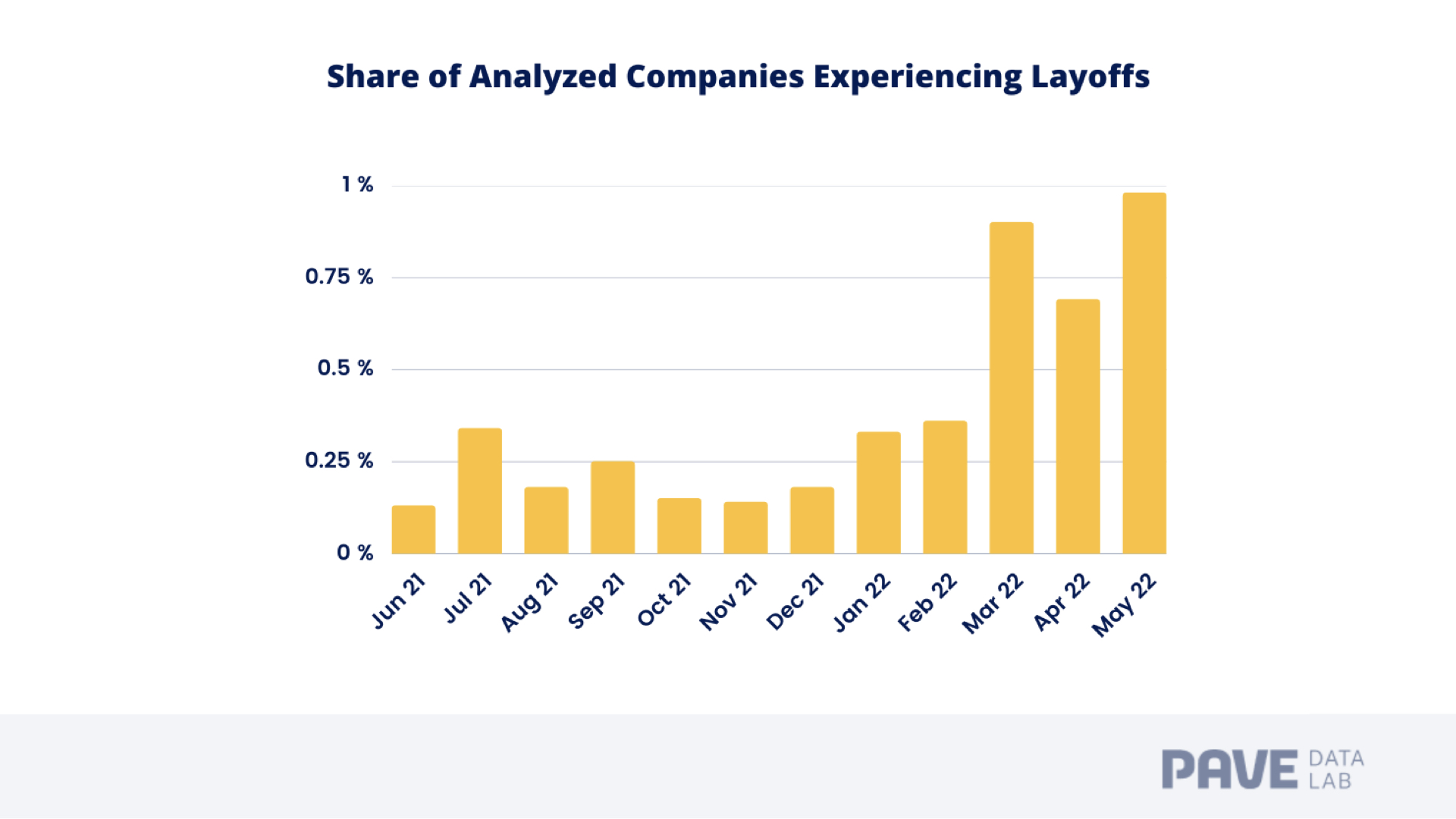Talk of recession looms large in the face of inflation and stock market volatility.
For some companies, the financial strain of the current economic climate is beginning to take its toll.
Pave looked at dozens of layoff events over the past year to understand just how heavily the threat of recession has been weighing on companies. The data shows a growing trend in layoffs, as well as some important additional findings around how bad the cutbacks have been and who is most at risk.
Layoffs are Increasing in Frequency
To isolate layoffs in our dataset of compensation records, we defined a layoff as when a company with more than 50 full-time US employees had their headcount decline by 5% to 30% over a single day. Among companies that did experience a layoff event, the median company size was 100 employees.
To measure the relative frequency of these layoff events, we normalized the findings by dividing the raw count of layoffs in a given month by the number of active companies in the dataset during that month.
The resulting data shows that, over the past three months, there has been a dramatic rise in frequency of layoff events, with nearly 1% of analyzed companies experiencing a layoff in May 2022.

Furthermore, the 2022 year-to-date monthly averages for frequency of layoffs have more than tripled compared against available data from 2021 (June through end-of-year).
If economic conditions worsen, these trends may be the canary in the coal mine of things to come, especially for fast-growing companies in need of capital infusions to stay afloat.
Size of Recent Cuts Are Slightly Above the 1-Year Average
With layoffs becoming a more common occurrence, Pave also analyzed whether the severity of layoffs was on the rise as well.
Looking at the past year of available data, the average layoff size across all analyzed months was 11%. Meanwhile, layoffs in April and May averaged a 13% reduction in staff—higher than any of the previous 6 months.

While large-scale cuts are never a happy occurrence, they can be necessary to restore fiscal sustainability to a company and prevent a series of drawn-out smaller cuts, which are particularly hard on morale.
Sales Roles Most At Risk
Looking at data from only the past three months, Pave also analyzed employees across all the companies that experienced a layoff to find out which job families were most and least likely to be let go.
Roles in IT, Software Engineering, and Product Management were among the closest to the average severity of reduction at 16%, 14% and 13%, respectively.
Meanwhile, Salespeople were among the most at-risk, with layoffs impacting an average of 23% of those roles. At the other extreme, Executive Assistants were among the job families least likely to be fired, with only 6% of EAs being let go in analyzed layoffs.

As talk of recession accelerates, it remains to be seen whether an increasing number of companies will adopt similar layoff strategies.
The Pave Data Lab will continue to dig deeper on trends impacting hiring, compensation, and merit cycles as HR teams work to navigate this phase of economic instability.
The only data-driven blog powered by real-time HRIS & Equity integrations.



.jpg)



.jpg)